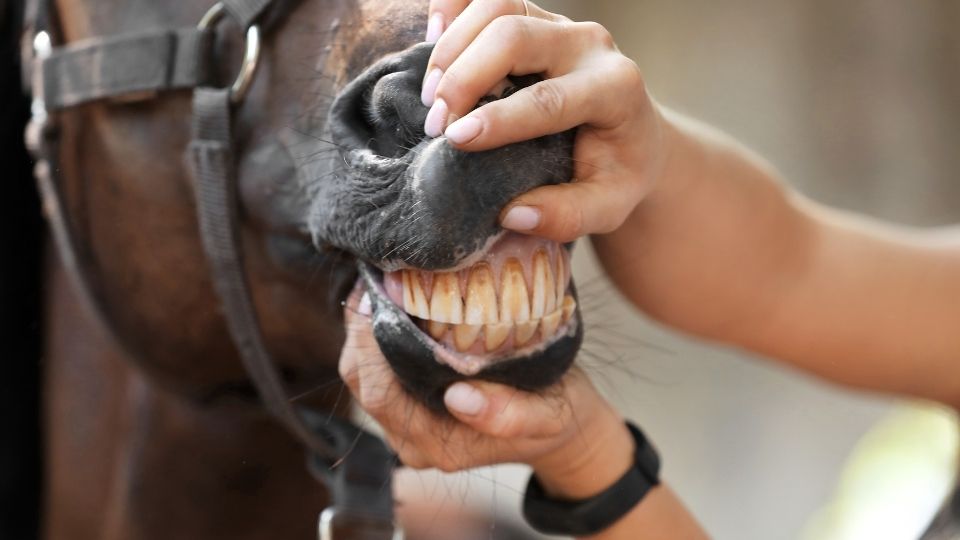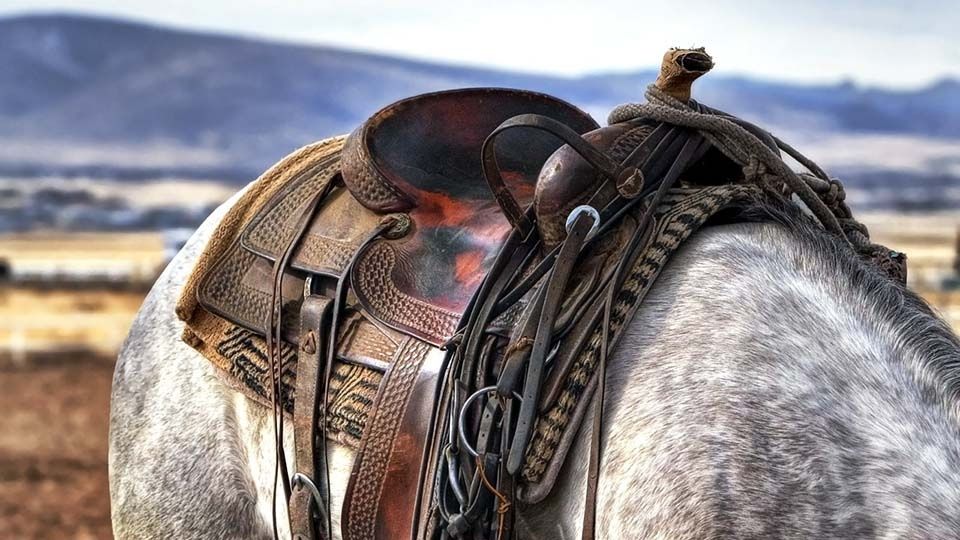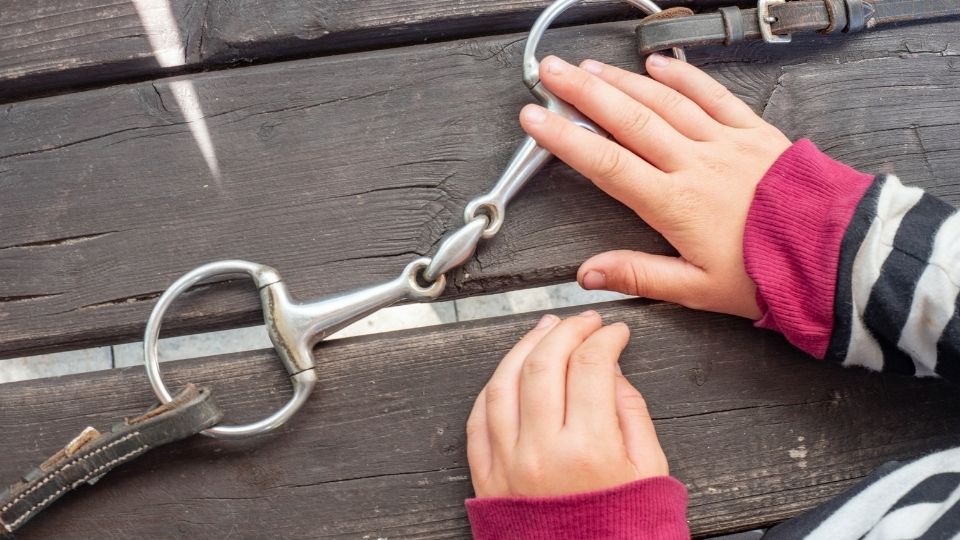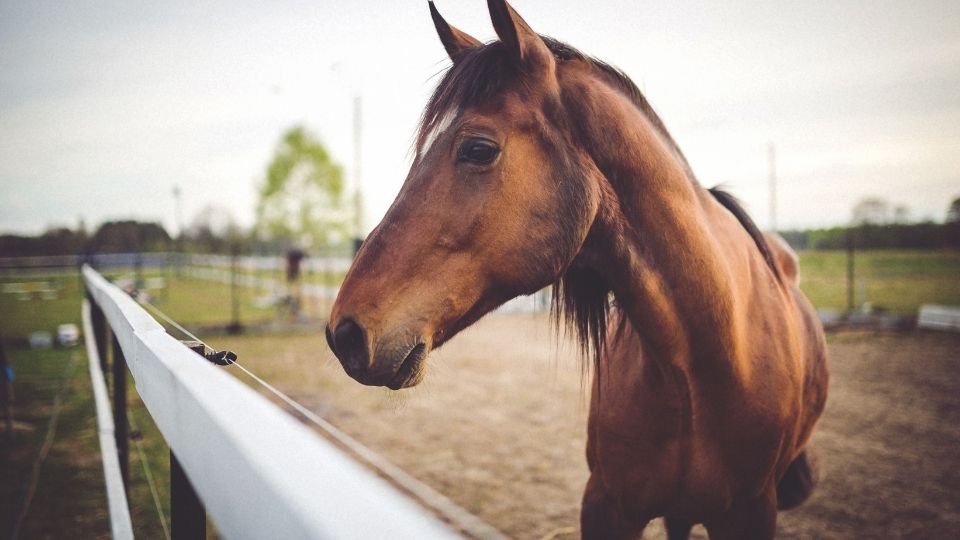Daily Horse Observations for Horse Owners

When responsible for a horse, an owner must be very observant. Knowing what is normal and what is not for each individual horse can alert the owner or caretaker to a problem before it becomes a big issue. Owners that have a routine, which can be followed at each feeding, can better observe their horses for any indications of a problem. Finding a problem early may save owners major veterinary expenses or the loss of a horse.
When feeding, after not seeing the horse for the night or day, it is important to get an initial impression of the horse’s overall wellbeing. If the horse is stalled individually there are many aspects one can evaluate. If housed in a group it may be difficult to monitor some aspects of an individual horse; however, if a group housed horse does not come up with its herd mates, it is definitely cause for concern.
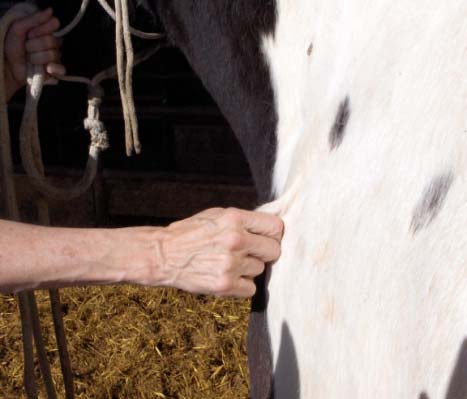
the skin, it should return to normal immediately.
Stalled Horse – Water
When a horse is watered by a water bucket, the amount left should be evaluated at each feeding. If the horse usually has a 1/4 of a bucket left in the morning, any change in that amount should raise some questions. If there is more than 1/4 bucket left, ask yourself if it is due to a weather change, such as cooler weather. A drop in air temperature can decrease water intake, but even if due to weather it should not be taken lightly, as a drop in water intake can cause digestion problems. It could also be caused by a decrease in work load or a change in feed to one higher in moisture content.
It can indicate an ill horse so further investigation is warranted. Sprinkling a tablespoon of loose salt (table salt) onto grain, if the horse receives grain, or onto wet hay typically increases a horse’s water consumption. If water intake increases from normal, it could be due to warmer than normal weather, increased work load, or a change in diet to a drier feed.
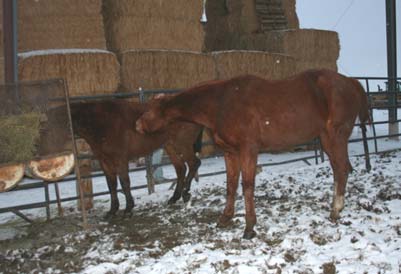
left out of the feed bin.
Group Housed – Water
It is more difficult to determine if a particular horse is drinking when housed in a group setting. With any concern for a horse’s health, if possible, the horse should be separated for easier monitoring. This will allow for water and manure monitoring and behavior evaluation. If the horse drinks from an automatic water system, it can be more difficult to determine water intake. Some automatic water systems have meters that measure intake. If no meter is attached, any indication of a problem requires the automatic water be turned off and a bucket hung so water intake can be monitored. Checking the horse for dehydration can be helpful in determining water intake concerns. The skin pinch test (Figure 1) is performed by pinching the skin on neck or shoulder between the thumb and pointer finger. If the skin snaps back to normal the horse is adequately hydrated. One can also lift the upper lip and check the horse’s gums for moisture. Looking at the flank area will also indicate if the horse is drinking, as a horse that is not drinking will have flanks that are drawn in.
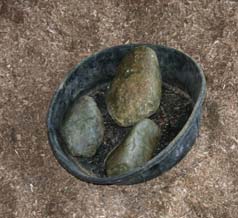
a horse down when eating grain.
Manure
The number of manure piles and manure consistency can be evaluated for individually housed horses. Knowing how many piles are in the stall each morning or feeding is very helpful. If the number decreases it can indicate a digestive problem developing. Consistency and color is also important. The manure should be soft round balls (road apples) with a greenish color if on grass or good quality alfalfa hay but a brownish color if on older hay. If the manure is soft, like cattle piles, it can indicate some kind of digestive upset. A horse that is switched too quickly from hay to pasture or from one type of feed to another will usually exhibit this soft manure. Shooting diarrhea is an emergency as a horse will become dehydrated very quickly with extreme diarrhea.
Feed Intake
A horse’s interest in hay/concentrate provides valuable information. A horse should come up to eat with interest and eat steadily. If the horse comes up and wants to eat but does not continue, it is a strong indication of ill-health. If the horse is in a group, the person feeding should make sure each horse comes to eat and stays and continues eating (Figure 2). It is a good practice to put out one more feed pile than number of horses so that even the most submissive can access feed. Feeding is more than just putting feed out; it involves checking that each horse has access to and eats its feed.
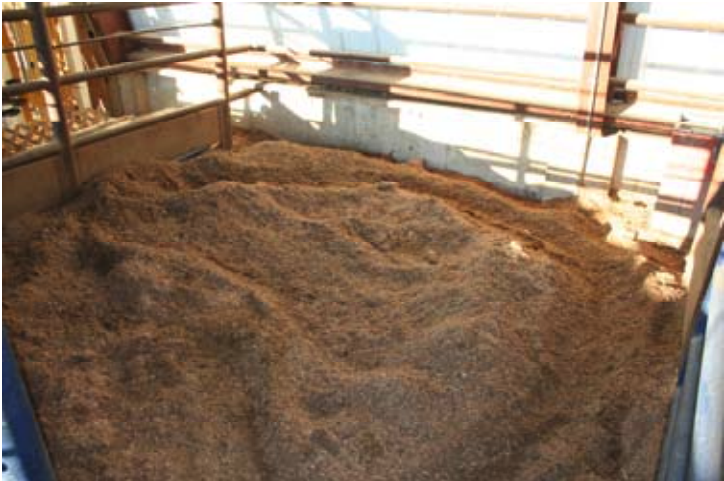
Take care of a horse that bolts (eats very rapidly) feed (concentrate) by putting large rocks in the grain bin to slow the horse down (Figure 3). Giving hay first can also help a horse slow down when eating its grain.
Stalled Horse
Checking the stall for any unusual wear during the night or day is important. If there is a path worn in the stall (Figure 4) which is not normal, this indicates that the horse has been pacing so further checks for any other signs of distress should be done.
A horse covered in bedding or the stall very disturbed can indicate a colicky horse.
If a horse rolls and stands but does not shake off, this can also indicate a problem. Holes dug in the bedding indicate the horse pawed and could mean the horse is colicky as well.
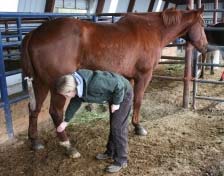
heat or swelling during feeding each day.
The horse should be haltered and held/tied
if there is any concern that the horse will
not stand still.
Body Check
Other than feeding and making sure the horse eats and looks bright, the horse should be checked over for any obvious signs of wounds or swellings (Figure 5). Check both sides of the body for any cuts or signs of irritation. Look at both eyes for brightness or any signs of drainage or irritation. Look and feel the legs for heat or swelling. When housed in a group, these evaluations should be performed on each horse. When housed in a large paddock or pasture, watch the horses walk or trot to the feed area. This can show signs of lameness or hesitancy to move.
Summary
Observing a horse for potential problems during normal feeding times can help owners find concerns before they become even larger problems. Anytime a horse deviates from normal behavior it is cause for a closer look. Performing these observations only takes minutes a day but can keep small problems small and help prevent problems from becoming life threatening or expensive. If the horse does not appear to feel well, its vital signs should be taken and possibly the veterinarian contacted. A fact sheet on vital signs can be found at extension.usu.edu/equine.
Published April 2009
Utah State University Extension
Peer-reviewed fact sheet
Authors
Dr. Patricia A. Evans, Extension Equine Specialist, Utah State University; Dr. Karen Waite, Academic Specialist, Michigan State University
Related Research


